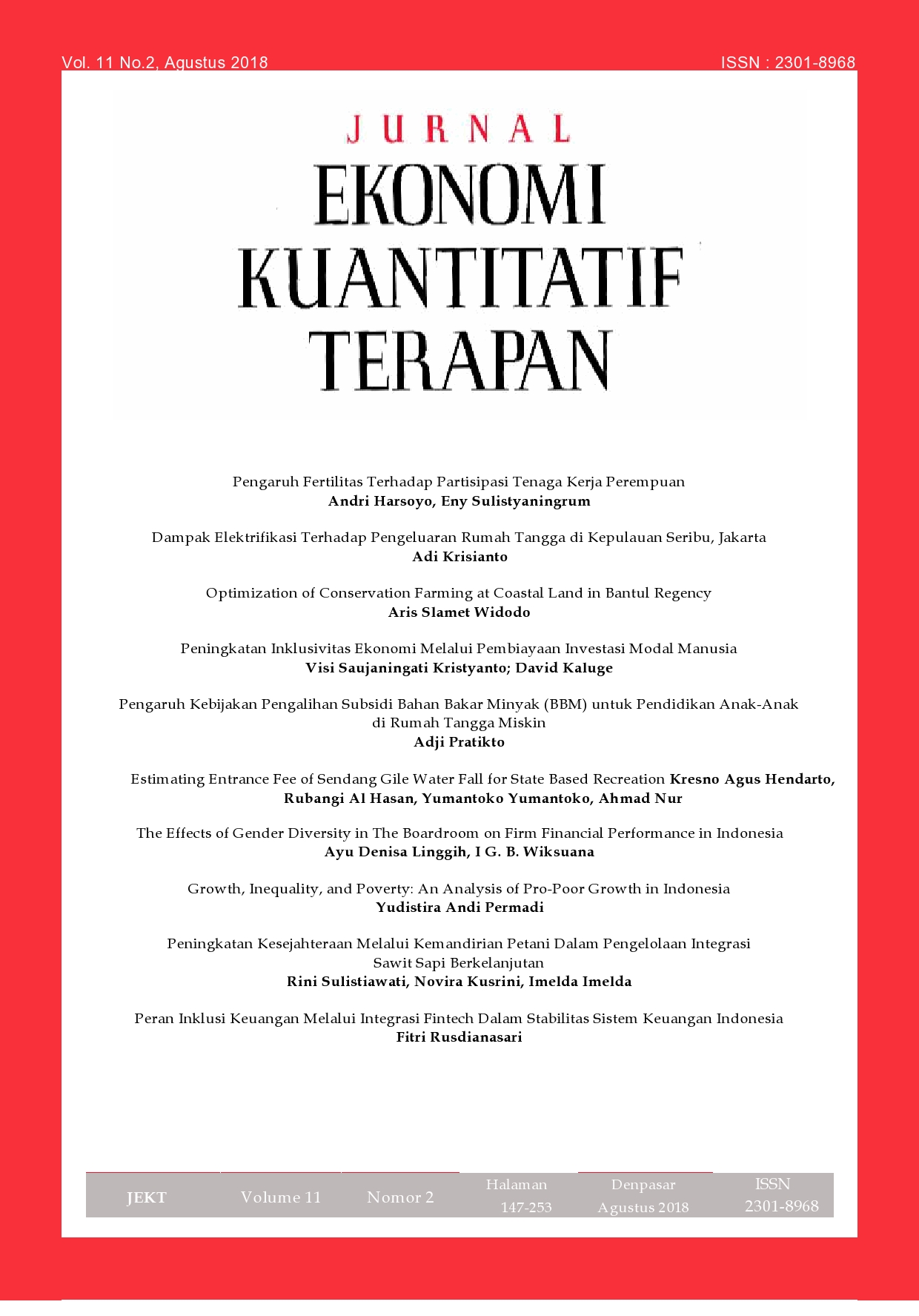Dampak Elektrifikasi Terhadap Pengeluaran Rumah Tangga di Kepulauan Seribu, Jakarta
Abstract
This study analyzes the impact of electrification of small islands on community welfare by evaluating household expenditure in the Thousand Islands. In 2008, South Seribu Islands District enjoyed electricity for the first time through an undersea electricity cable from the mainland of Jakarta, while the North Seribu Islands District in 2012 for the second phase. This gradual electrification process indirectly creates treatment and control groups that are ideal for conducting impact evaluation research. We use the Difference in Difference method, where South Thousand Islands District is the Treatment Group and North Thousand Islands District as the Control Group, with the observation period from 2007 to 2012. We found that total household expenditure rose significantly in all observation periods as an impact of electrification . Second, we found differences in household responses to some types of their expenses. Food expenditure increased significantly throughout the observation period, while non-food expenditure increased only in the first and second year after electrification.
Downloads
References
Card, D., and Krueger, A. B. (1994). Minimum Wages and Employment: A Case Study of the Fast-Food Industry in New Jersey and Pennsylvania. The American Economic Review, 84(4), 772–793.
Chakrabarti, S., and Chakrabarti, S. (2002). Rural Electrification Programme with Solar Energy in Remote Region - A Case Study in an Island. Energy Policy, 30, 33–42.
Gertler, P. J., Martinez, S., Premand, P., Rawlings, L. B., and Vermeersch, C. M. J. (2011). Impact Evaluation in Practice. Washington, DC: The World Bank
Kessides, C. (1993). The Contributions of Infrastructure to Economic Development. World Bank Discussion Paper; 213.
Khandker, S. R., Barnes, D. F., and Samad, H. A. (2012). The Welfare Impacts of Rural Electrification in Bangladesh. The Energy Journal, 33(1), 187–206.
_______. (2013). Welfare Impacts of Rural Electrification: A Panel Data Analysis from Vietnam. Economic Development and Cultural Change, 61(3), 659–692.
Maryaningsih, N., Hermansyah, O., dan Savitri, M. (2014). Pengaruh Infrastruktur Terhadap Pertumbuhan Ekonomi Indonesia. Buletin Ekonomi Moneter dan Perbankan, Volume 17(1), 61–98.
Prasetyo, R. B., dan Firdaus, M. (2009). Pengaruh Infrastruktur Pada Pertumbuhan Ekonomi Wilayah Di Indonesia. Jurnal Ekonomi dan Kebijakan Pembangunan, 2(2), 222–236.
PT PLN (Persero). (2008). Rencana Usaha Penyediaan Tenaga Listrik PT PLN (PERSERO) 2009-2018. Jakarta: Author.
Sibarani, M. H. M. (2002). Kontribusi Infrastruktur Terhadap Pertumbuhan Ekonomi Indonesia. Tesis Magister Sains. Program Pascasarjana, Jakarta: Universitas Indonesia
van de Walle, D., Ravallion, M., Mendiratta, V., and Koolwal, G. (2013). Long-Term Impacts of Household Electrification in Rural India. The World Bank Policy Research Working Paper No. 6527.
World Bank. (1994). World Development Report: Infrastructure for Development. New York: Oxford University Press
World Bank Institute. (2005). Introduction to Poverty Analysis. Washington DC: Author.




















